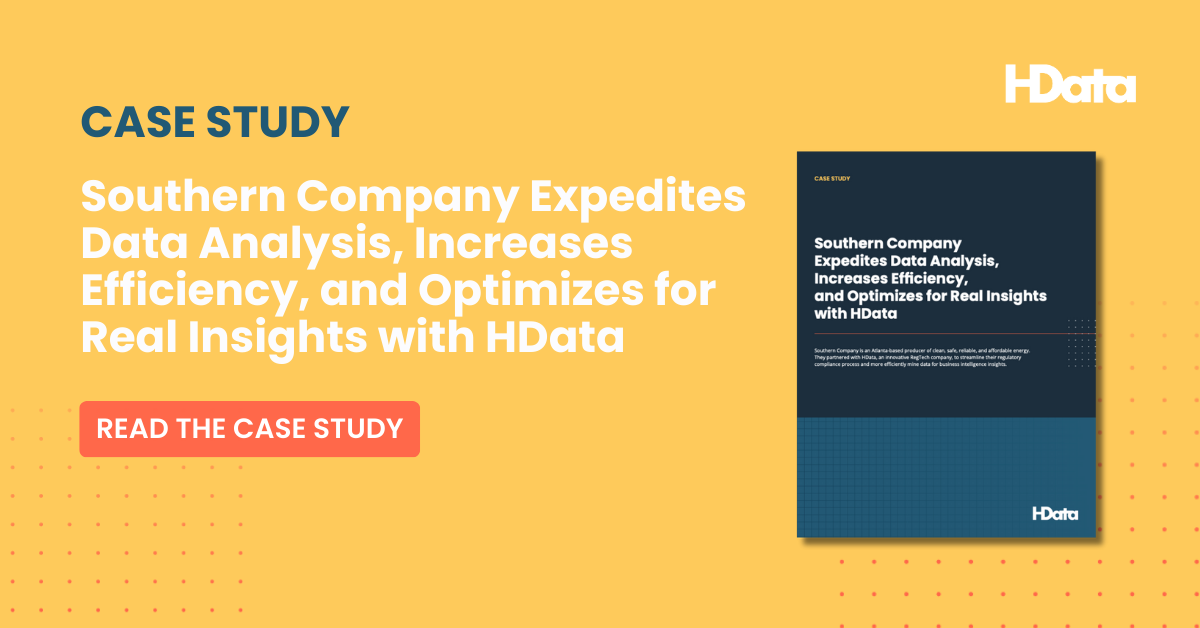Artificial intelligence is weaving itself into our everyday lives. We have pre-programmed thermostats that make decisions for us based on our demonstrated preferences, local weather reports, and ambient temperatures. We have algorithms organizing our calendars and optimizing our time for productivity. We have robots helping us make appointments, solve customer service issues, and troubleshoot issues with our internet. And—thanks to HData—our work in the regulated energy industry is now also infused with help from AI.
You can read more about our Regulatory AI tool in this blog. In this post, we want to walk you through what the tool is like to actually use.
Let’s take a look at how it might be helpful when you’re working on a rate case.
Rate case basics
The price a customer pays for a utility is known in the industry as a distribution rate. And utilities companies don’t pull the dollar figures out of thin air. They’re tightly managed by regulating bodies.
It works like this: When the amount customers pay for their utilities services no longer covers the utilities company’s cost of providing the service, the utilities company initiates a legal procedure called a rate case. And it all starts with an application.
These rate case applications are no light reading; they often consist of thousands of pages, packed with detailed data that demonstrates the rationale behind the newly requested rate. They outline the specifics of what the newly-proposed fee would encompass. Once the application is submitted, it’s rigorously reviewed by the regulatory body. They ultimately decide to approve or reject the requested rate.
The whole proceeding involves an enormous amount of data organization, analysis, and review. It’s complex and every detail matters. The outcomes have big implications for utility companies, customers, and regulators.
Let's dive into a comparison of what it's like to handle a rate case with and without the assistance of AI.
Rate case work, the old way
When tackling the analysis of a rate case without the assistance of AI, it's a deeply labor-intensive task.
Utilities companies aim to convince the regulators that certain expenses are necessary and beneficial to their customers, so they can pass those costs on to consumers and earn themselves a higher rate of return. To substantiate their claims, utilities present extensive data—often in thousands-page-long reports—about what those costs are, where they come from, and how they benefit the utilities users.
For regulators, the manual validation of this data becomes an arduous process. It involves meticulous examination of every single detail, as they try to decide two things:
Whether the expenses in question genuinely contribute to customer satisfaction
Whether the proposed expense amounts are reasonable
This process demands an exhaustive scrutiny of the documents. Regulators invest a substantial amount of time in validating the data manually. Cases can take months to decide, sometimes even years.
Rate case work, with AI
Regulatory AI transforms the rate case analysis process substantially.
It streamlines the evaluation of the rate case application because it can quickly scan through the thousands-page-long report and distill it into actionable, meaningful information. It minimizes the labor-intensive aspect of manual validation for regulators; instead of poring over the data, they can rely on the AI to swiftly identify the data points most relevant for them to examine, to seek out comparable precedents set in cases that came before it, and check that all expenses the utilities company wants to pass onto customers meets relevant criteria and rules.
Days of labor can be done in just minutes or hours.
Basically, Regulatory AI acts as a diligent assistant, reducing the effort required to identify pertinent data and reducing the risk of human error.
More about Regulatory AI
This tool can be precise in its understanding and evaluating regulatory data because that’s what the algorithm was trained on. It’s custom-crafted for this specific field. Unlike other AI, it doesn't limit itself to simple keyword searches; it comprehends the real intent behind your queries—which it understands in your regular, industry-specific language—and fetches pertinent answers from the documents you've directed it to use.
The results it delivers are accurate, relevant, and best of all, come with convenient links leading back to the original source document. It makes organizing and analyzing the information a straightforward and hassle-free experience.
Are you interested in learning more about artificial intelligence in the utilities sector? Curious to see first-hand what HData products can do for your workflows? Request a copy of our ebook to learn more.
FURTHER READING: A Closer Look at Regulatory AI


